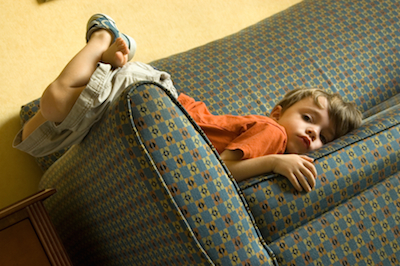Pressuring Teens To Exercise Doesn’t Work
By Dan Peterson, TeamSnap's Sports Science Expert
Stop me if you’ve heard this one. “Hey, it’s a beautiful day outside, why don’t you kids go outside and play,” or maybe “You guys have been playing video games for 3 hours, now get up and move around.” As parents, we know that some kids need a little more motivation than others to exercise regularly, even if we don’t actually say the “e” word in front of them.
With childhood obesity showing no signs of improvement in the U.S., this next generation needs to be educated on not only the need to be active but to also learn to like it. Well, like getting to bed on time or doing their homework, a new study from the University of Georgia says we need to be a little more stealth instead of just the direct, guilt-trip method.
Previous studies have found that kids decrease their activity levels between the ages of 9 to 15 and by 50% between 6th and 7th grades, so it’s this age that is the most important to target for setting new behavior patterns. While there are many programs designed to urge kids to move, the key may be to find their internal self-motivation to be an active teen, independent of any authority figure’s direction.
Rod Dishman, a professor of kinesiology in the College of Education at Georgia, used the Transitions and Activity Changes in Kids study to examine the physical activity during that crucial transition period between 6th and 7th grades. He and his research team surveyed 171 boys and 181 girls in both grades to understand how much they felt pressured to exercise by parents, teachers or other adults. Each of the kids also wore an accelerometer for seven days to track their activity levels.
Those students who felt most in control of their exercise decisions were also the most active. The opposite was also true, kids who felt pressured to get moving rebelled and were the least active in the sample group.
The research has been published in Medicine & Science in Sports & Exercise.
Dr. Dishman feels that the best strategy is getting them hooked on exercise much earlier in grade school so that is an enjoyable habit by the time they reach the independent teen years.
"Our results confirm that the beliefs these kids hold are related to physical activity levels," said Dr. Dishman. "But can we put these children in situations where they come to value and enjoy the act of being physically active?"
Youth sports can be a sneaky way to get them active, as long as its fun and not forced on those who would rather pursue other interests.
"Just like there are kids who are drawn to music and art, there are kids who are drawn to physical activity," said Dr. Dishman. "But what you want is to draw those kids who otherwise might not be drawn to an activity. The best thing is to do it because it's fun. It's the kids who say they are intrinsically motivated who are more active than the kids who aren't."
NEW! Free Sports Organization Resources
All of TeamSnap's ebooks, articles, and stories in one place. Access Now
Similar Articles:

Just a Short Workout Can Reap Health Benefits
By Dan Peterson, TeamSnap's Sports Science Expert …
Read More

Do Your Kids Have Lazy Genes?
By Dan Peterson, TeamSnap’s Sports Science Expert.…
Read More

Just Ten Minutes of Daily High Intensity Exercise Will Benefit Your Teen’s Heart
By Dan Peterson, TeamSnap's Sports Science Expert …
Read More
